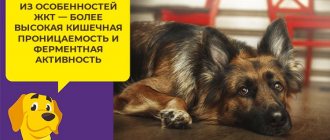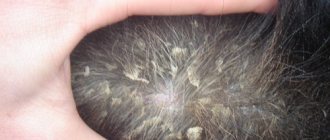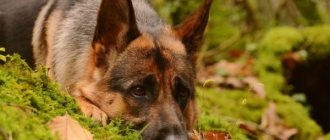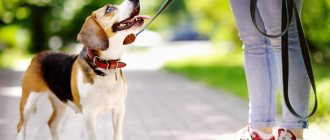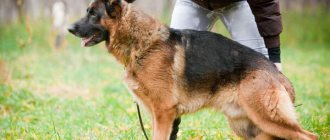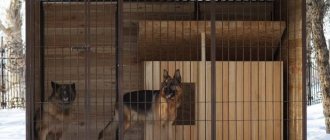Having a dog in your home is not only a great joy, but also a responsibility. To ensure that communication with your pet brings only pleasure, it is important to carefully think through the model of upbringing and study the characteristics of these animals and their needs. One of the most common problems for novice owners is that the puppy bites everything around. In the early stages, such behavior may be associated with the eruption of permanent teeth and exploration of the outside world. If handled incorrectly, this can lead to damage to items and injury in the future. In this article we will look at how to properly train a puppy to stop biting.
Why does a puppy bite?
The desire to bite in puppies is a natural process that is observed in almost all breeds before they begin to grow up. There are several reasons why small dogs actively use their teeth:
- Exploring the World . It is with the help of the oral cavity that puppies explore the world around them. This is how they identify interesting objects, food and establish boundaries allowed by the owner in the new territory. This behavior is especially common when the puppy is brought to a new home.
- Teething . The active process of replacing baby teeth begins at two months and can last 10 months. For a dog, this is accompanied by itching and sore gums, so the puppy begins to bite everything around.
- Communication . If your pet begins to bite your arms or legs, most likely he wants to communicate or play. This behavior is most often observed in dogs that were weaned early from their mother and litter.
- Instincts. The desire to bite everything around can be caused by the dog's hunting instinct. This is especially common in working breeds - dachshunds, terriers, spaniels, beagles.
Uncontrolled use of teeth is observed when dogs express emotions. For example, a puppy actively bites when he is happy or worried. In young male dogs (even before puberty), such behavior may be a sign of a dominant or territorial instinct.
Why does a puppy bite its owner?
A dog is a devoted friend to man, but also a social animal, which is characterized by the instincts of its ancestors. They are genetically programmed to use their teeth in the struggle for leadership and survival.
If you raise the animal correctly, the dog will not bite people. However, there are certain reasons that contribute to the manifestation of aggression and uncontrolled behavior of a pet:
- Owners beat dogs in an attempt to gain obedience (such animals pose a threat to others);
- The dog’s desire to take possession of food, position;
- Serious illness of the pet;
- Nervous disorders;
- Jealousy;
- Fear is a product of cowardice and self-doubt.
The reasons for an animal’s bad behavior can have both a physiological and psychological basis.
On a note! Certain breeds of dogs are more prone to aggressive behavior than others. In this case, you cannot do without professional training and education.
In each case, the pet uses its teeth to protect itself from the problem. Only a professional will be able to understand the pet’s condition and take the right steps towards correcting the puppy’s antisocial behavior.
Breed predisposition
Some breeds are more likely to bite than others. As a rule, such behavior is expressed in large working dogs: husky, German shepherd, Alabai. It is believed that this is due to the animal’s genetic memory, the mother’s behavior pattern, temperament and the need for systematic exercise.
Dogs with a powerful jaw, for example, Rottweiler, Pitbull and Staff, must undergo correction from puppyhood.
This will avoid problems in the future - an uncontrollable dog is a huge threat to others.
Even if the puppy is small, you should not develop a love for biting. Even small teeth can cause a lot of problems. Popular breeds in this group:
- Jack Russell Terrier;
- Toy Terrier;
- French Bulldog;
- pug;
- chihuahua;
- Pomeranian Spitz.
If you cannot cope with raising your pet, regardless of the size of the animal, you should contact a professional dog trainer. He will select the most appropriate behavior model, taking into account the characteristics of the breed and the dog’s temperament.
Ways to wean a shepherd dog from biting
If the cause of biting during play is the hyperactivity and willfulness of the German Shepherd or ordinary dog mischief, then stopping the play activity will not be able to correct the situation. In this case, recommendations aimed at prohibiting and effectively switching the pet’s attention are followed:
- completely stop playing with the dog;
- freeze and give any prohibiting command (“No”, “Fu” or “You can’t”);
- Gently unhook the teeth from clothing, arms or legs and replace them with a toy.
Biting by adult and healthy animals most often occurs when the four-legged pet is dominant. In this case, the bite becomes a peak situation, usually aimed at causing pain.
In this case, the human reaction to such an action of the dog should be not only immediate, but also competent, aimed at returning the dominant in the relationship between the owner and the four-legged pet:
- It is necessary to perceive a pet as a dog, and not an equal, albeit beloved, member of the family. It is important to remember that in a family hierarchy, the animal is in the lower positions;
- There is no need to be embarrassed to pronounce prohibiting commands if necessary, which will prevent unwanted actions. There is no need to yell at or hit your German Shepherd, but the commands “No,” “Ew,” and “Don't” should be spoken in a firm, confident voice;
- One should systematically apply commands to develop self-control and ensure their correct, strict implementation. Only in this case is the pet rewarded with its favorite treat and praise.
Preventive measures are considered to be the most effective in the process of weaning a German Shepherd from biting . A four-legged pet should absolutely not be allowed to use objects or belongings of its owner in games, including parts of clothing. If a pet, in the process of excitement and play, grabs a person by the arms, legs, sleeves or trouser legs, you should stop the play activities and get out of the animal’s field of view. At the same time, it is quite enough for the intellectually developed and most intelligent representatives of the breed to show a special gesture.
A pet, regardless of age and breed characteristics, must strictly follow the rules of behavior and understand its place in the house. It is advisable to allocate a place for the dog to sleep and rest not in the room or kitchen, but in the hall of the household or in the apartment corridor. For representatives of the largest breeds of dogs kept in private households, including shepherds, it is advisable to purchase a booth or equip an enclosure. In any case, the biting four-legged pet must be removed to its place in a fairly firm and confident tone, immediately interrupting the game.
This is interesting! The most sensitive in terms of dominance and restrained in actions, including biting, are border collies, beagles, bobtails and golden retrievers, which have a stable psyche and emotional stability, but shepherds are distinguished by their natural intelligence and tact.
It should be remembered that German Shepherd puppies are like small children, so they really need special toys. It is precisely these gaming items that can not only relieve even mild bites from the owner or family members, but also protect surrounding interior items and expensive furniture.
Return to content
Correction during the game
Raising a puppy is best done while playing. This allows you to avoid the animal’s negative emotions - the necessary skills are reinforced by the pet’s positive experiences. The easiest way to deal with a dog biting his legs or arms is to put a ball in his mouth at the beginning of the movement. Alternative methods and useful recommendations:
- Try to avoid positive reinforcement for careless play. If your puppy begins to bite while interacting with you, you should immediately respond to his behavior. In this way, let your pet know that the game is a reward for good behavior.
- If the puppy begins to behave too actively during interaction or play, biting, stop the contact, turn his head to the side and cross his arms over his chest. Continue the game only after the dog has calmed down.
- Say “ouch” or “that hurts” loudly when the puppy lunges to bite you. An alternative is to use a squeaky toy.
Any correction should be gradual. First, you need to demonstrate your reaction only to strong bites, then avoid even accidental biting.
How to stop a puppy from biting
A puppy under 4 months of age, due to the presence of milk teeth, cannot control the force of its bite, and therefore during play may painfully bite the owner’s arms or legs. It is important that this innocent habit does not enter adult life.
Puppies cannot calculate their bite force until their baby teeth are replaced by molars.
What to do:
- At the first stage of training, you shouldn’t panic and make a tragedy happen because of a bite, much less scold or scold your pet;
- If the puppy bit you intentionally, then you should use the “fu” command, creating a light slap with your palm in the croup area (the animal cannot be hit on other parts of the body);
- If an accidental bite occurs, for example, during play, you need to stop the activity, wait 10 seconds until the animal calms down, and then continue playing;
If your puppy starts biting during play, you need to pause.
- If biting has become a habit, you need to work thoroughly with your pet in order to avoid serious consequences in the future.
Attention! When raising an animal, it is important to take into account the fact that the pet must be at the level of the hierarchy after all family members; this is the only way to rationally manage it.
Trainers have developed a lot of ways to wean a dog from biting, the main thing is to use commands correctly and get the puppy to strictly follow them. It is important to praise your pet and reward it with its favorite treat.
Moderate use of rewards will motivate your puppy to change behavior.
Video - Weaning a puppy from biting
Switching attention
Puppies quickly switch from one object or action to another. This can be used to stop your dog from biting you. The optimal solution is to use a toy. If your pet begins to show his teeth, take the toy in your hand and then throw it to the side. Various whistles or moving objects can be used. When performing the desired action, be sure to reward the animal with a treat.
Hand Punishment
This method is considered the most natural for dogs, but it is important to correctly calculate the force - excessive impact can cause negative emotions in the pet, aggression towards you, and even health problems. You can't hit the dog, but you can use your hands in the following ways:
- lightly flick the nose or ears;
- pinch the side or croup area, simulating a bite;
- pull the skin on the withers to the side.
Such manipulations cannot be enhanced by emotions - they must be performed only technically, without shouting or raising the voice. It is important that the dog understands why he received the punishment - the impact should be immediately after he begins to bite you.
Let me calm down
If your dog has already mastered simple restraint commands - “stand”, “lie down” and “sit”, they should be used to correct behavior. When the puppy got carried away during the game and began to rage, bite you, say the desired command. Be sure to achieve compliance and then give a treat. In the future, such behavior can be stopped by sending it to a place if the apartment has a sunbed and the pet knows the “place” command.
How to stop an adult dog from biting
Nature has given dogs the potential to show aggression. Therefore, protecting oneself and the owner, territory and property, hunting is a normal phenomenon. But when biting the hands and feet of household members becomes an everyday and unreasonable occurrence, correction of incorrect behavior is required.
An adult animal can only be partially changed; it is difficult to re-educate. Psychological foundations are laid before a year. You will have to make every effort and take the help of a professional dog handler to become an authority on your four-legged pet.
Domination
You need to teach your dog not to bite from an early age. By the age of 2 months, the puppy must learn that he cannot dominate his owner and family members. The person needs to show the dog who is in charge and not give up his leading position.
Particular attention should be paid to feeding. If you manage to take the piece you like from the bowl of a eating dog, then according to the laws established in the animal world, you are a leader who must be obeyed.
An important point in training is the division of territories. The animal must sleep in a designated place, and the bed is the property of the owner; penetration and seizure of it is unacceptable. The dog clearly knows: whoever occupies the territory of the leader becomes the leader.
It is impossible to allow the dog to dominate the family, otherwise it will definitely not be possible to raise him the way you want. Each command will be accompanied by growling and aggression from the dog.
A 6-12 month old male teenager requires stricter training. After biting an arm or leg, instead of screaming and hurtful words, use the “wolf technique” - when the puppy starts to snap and growl, lightly press him to the floor or lift him on a leash and shake him. This must be done carefully so as not to strangle the dog or break its neck. After the pet goes limp - he needs to be released - he has already recognized your superiority and leadership in the family.
Socialization
Socialization of a pet is acclimation to society and society, and not selective, but modern, the most ordinary, often fussy and noisy. The animal will constantly have to deal with different weather, other animals and people.
The main assistant in shaping the dog’s correct behavior will be daily walks with the owner. You can walk your dog outside immediately after the end of the vaccination quarantine. The socialization algorithm is the same for all breeds, it is as follows:
- Initially, the animal is introduced to the territory near the house (10-25 meters), 15 minutes is enough for a walk;
- after 3-4 days, the walking radius expands; it is better to avoid meeting other animals, as the dog gets used to the leash and the sounds of the city;
- after 14 days, the animal can be walked along the street longer, introduced to other dogs and basic commands;
- Do not forget about an adequate attitude towards people: the dog should not be afraid of them, growl, rush and bite;
- in a month you can take your pet in a muzzle and on a leash on public transport, go on a visit, to a store, to the market and to other public places.
Accustoming to society and society does not tolerate haste and fuss. Never introduce your dog to several new things at once. Let him adapt to one thing, after which he can continue acquaintance and education. These rules apply to both a puppy and an adult dog adopted from a shelter.
Fighting aggression
If a dog attacks due to an attack of aggression, it growls and grins, and there is a strange shine in its eyes. In addition to this, other gestures are manifested - a raised tail and ears, tousled fur on the back and neck, a close look at the object of attack.
To prevent dog aggression, remove the motivation, that is, coexist peacefully with the animal and do not provoke conflict situations with your attitude and behavior. When your dog shows aggression by growling, resisting, or lightly biting his arms and legs, be firm and force him to submit.
By completing a training course at the center, you will be able to acquire the necessary skills in hierarchical relationships with your pet. A professional dog trainer will tell you how to stop a dog from biting arms and legs, and will develop an effective training method for a specific breed. To avoid being bitten in conflict situations, the animal must be put on a muzzle and a leash, but the dog must be accustomed to them in advance.
Trainer-led training courses
For a comfortable and safe life next to humans, almost all dog breeds (except small four-legged ones) require a general training course, also known as OKD. This is especially true when the breeder is inexperienced. Raising a dog will require the owner to be attentive, precise in his actions, and strictly adhere to the training methodology. Training courses under the guidance of a professional dog handler will allow you to timely and clearly manage the actions of the animal in everyday life, and raise a calm, obedient and friendly pet.
Working with aggressive dogs
When raising temperamental and dominant dogs, gentle methods of positive influence do not always give the desired result. In this case, it is recommended to move on to physical training techniques. Effective ways:
- Press to the floor. One of the most effective and safest ways to influence a dog. As soon as the pet begins to aggressively growl and bare its teeth, take it by the withers and press it to the ground. Hold persistently until the animal calms down. All manipulations must be carried out smoothly and without emotions in order to avoid negative consequences. After calming down, talk to your pet and give him a treat.
- Turn over onto your back. The technique is similar in its mechanism of action, the only difference is that the dog needs to be turned upside down. If it is not possible to place the puppy on its back, it can be placed on its side.
- Lift into the air. Recommended for very active and temperamental puppies that cannot calm down for a long time and continue to bite even after your commands. After your pet touches you with its teeth, gently grab your chest and lift it so that its paws leave the ground. Wait a few seconds, then release and, after the condition has normalized, reward for calm behavior.
Any dog, regardless of size and character, must unconditionally obey its owner and respond to commands. If you are unable to find the correct correction technique, you should contact a dog trainer. For some puppies, it will be useful to take PKS (protective guard service) courses - this will allow you to realize the potential of your animal without a detrimental effect on its psyche. You can start them as early as 3 months.
In addition, even regular group obedience classes are effective in teaching a puppy not to bite constantly - at an early age, dogs try to imitate the behavior of other individuals, so it is better to train surrounded by adult, trained animals.
How to stop aggression in an adult dog: 5 proven methods
It is more difficult to wean a junior and adult dog from biting than a puppy. Grown-up dogs have already developed behavioral habits that are difficult to fight.
Is it possible to use gentle methods that work with cuties? Yes, they work on some pets. But usually you have to act tougher.
An older dog is more difficult to control. The main problems are related to puberty and attempts to dominate. If the owner has not built the right relationship with the pet during puppyhood, he will have to gain authority. With a number of breeds - fighting, guarding, hunting - this is infinitely difficult. You will need the help of a zoopsychologist.
The following methods are used for junior and adult dogs.
Pinned to the floor
It is considered one of the most effective ways to stop a dog from biting your hands. As soon as the pet bares its teeth, they grab it by the withers or neck and press it to the ground. Looking into the eyes, they menacingly give a prohibiting command. They hold the four-legged rascal until he whines.
The dog must lie on the floor until the owner allows him to get up. If the animal gets up earlier, the manipulation is repeated.
When pressing the dog to the floor, do not put pressure on the neck - this can break the vertebrae or strangle the pet. After punishment, ignore the dog for 20-30 minutes.
Roll over onto your back
Another method to stop your dog from biting your hands is to place him belly up. The method is suitable only for relatively calm and not frightened animals - if the dog is overly aggressive, it will bite.
Showing the belly is the highest sign of submission in dogs. If it is not possible to place your pet on its back, it should at least be placed on its side.
Lift into the air
The most cruel method from the animal's point of view and the most effective way to wean a dog from biting arms and legs.
In the dog’s understanding, the one who was able to lift him into the air is a mighty alpha. If the pet is a large or giant breed, this type of punishment is used as early as possible, before the pet becomes a heffalump.
If the dog is too large, they grab it by the withers and lift it so that its paws come off the ground. Loss of soil disorients the animal. At the same time they shake you by the scruff of the neck and give the command to prohibit.
Hold the animal until they hear whining. Ideally, after punishment, the dog will demonstrate a pose of submission - lie on its side, roll over onto its back, lower its head. If this does not happen, they are ordered to “Sit” or “Lie down”.
ZKS
Protective guard service courses are suitable for overly aggressive, dominant dogs. In classes, you can wean your dog from biting arms and legs for no reason. The pet will understand that this should only be done on command, after which he will receive a reward. Plus, working in tandem with a person will help establish contact.
Suitable for ZKS and cowardly pets. Animals will redirect fear into protecting their owner, learn to use their teeth when needed, and become more confident.
ZKS is trained after completing the basic training course (OCD). Pets over 2-3 years old are allowed.
Classes with a dog handler
To stop a dog with psychological problems from biting, behavior correction methods will be needed. The pet is taken to a dog handler or animal psychologist - they will develop an individual program for the pet. Only together with professionals will the owner achieve respect and obedience.
How not to unlearn - common mistakes
When correcting behavior, it is easy to make mistakes, which can lead to changes in your pet’s psyche - puppies are distinguished by their receptivity and mobility of emotions. Typical mistakes when working with dogs at an early age:
- You cannot respond with any emotions to the excitement of the animal. Even positive reinforcement and affection can harm correction. All your reactions should be calm and thoughtful. If the puppy ignores the command, then wait for a reaction.
- It is forbidden to shout or hit the puppy, even if it bites painfully. This can only lead to increased aggression, the development of anxiety and nervousness.
- The puppy should not play with your things or bite your shoes or other objects. As soon as you notice that the dog has begun to tinker with an unwanted object and is gnawing on it, stop this behavior immediately.
- It is forbidden to punish the puppy with food or walking. All basic needs must be fulfilled in full (even if it is not obeyed at all), since the future health of the dog depends on this.
Peculiarities of upbringing directly depend on the puppy’s temperament and the characteristics of the breed. When working with excitable puppies, play, praise, and even voice changes should be limited. You should pay attention to what the puppy responds to better and what it can ignore altogether, change the strategy taking into account the character of your pet.
The process of re-education
No matter what causes a dog to growl at its owner and other family members, such behavior must be dealt with. After all, according to statistics, about 80% of pets that allow themselves to behave this way are capable of biting a person.
If anger is not associated with a disease of the central nervous system, injuries or other pathological conditions, then you should start raising the presumptuous pet.
When working with overly aggressive dogs, experts recommend using an ultrasonic whistle. Its sound is so unpleasant to the ears of animals that the dog stops growling and grinning, just so as not to hear it anymore. Gradually, he will begin to understand that his influence is associated with inappropriate behavior and will understand who is in charge in the house. In this case, the necessary reflexes are triggered.
When choosing re-education methods, you must take into account the type of aggression, habits and temperament of your pet. And if such behavior occurs in serious, large dogs, then it is best to contact a dog handler who knows the breed characteristics and has experience working with such dogs. A large, strong pet is a big responsibility and it’s not worth risking the health of yours and your loved ones.
But, regardless of the size of the pet, it is important for the owner to restore his authority by becoming a real leader. The dog, of course, will not immediately accept the new state of affairs and will resist, but by showing patience, endurance and fortitude, the person will be able to normalize the situation.
Otherwise, a dog of a guard or fighting breed may become a threat to others. And if a person initially does not have a strong character and does not have experience in communicating and raising such animals, then the idea of having such a pet should be immediately abandoned.
To restore the hierarchy, it is important for the owner to know the leverage points and take control over them. This includes the process of feeding, affection, reward and punishment.
Briefly about the main thing
- Puppies can bite due to teething, while exploring the world around them and in the process of communicating and playing with the owner.
- Some breeds are prone to biting. This is important to consider when choosing a parenting strategy.
- You can wean your pet off from biting during play, by switching attention, or by ignoring it.
- For aggressive and temperamental dogs, stronger methods should be used - physical impact, punishment.
Have you ever experienced that your puppy started biting? Share in the comments how you dealt with this problem.
Main reasons
There are other reasons why your puppy may growl or bite you outside of play that you should pay special attention to, as it is necessary that you know how to properly handle them so that they do not become a behavioral problem in the future. Thus, the most common reasons are the following:
- Fear . One of the reasons why your puppy growls at you if you get close and may even bite you is because he feels insecure. This problem is not common as puppies are usually quite familiar with human contact. Experiencing traumatic experiences and/or poor socialization during the first months of life, as well as a possible genetic tendency that may exacerbate such behavior, may be an explanation for this problem, which will require a lot of patience and empathy. Therefore, aggression occurs not because your baby wants to attack you, but because your puppy is afraid of you and is trying to protect himself.
- Resource protection . There is a myth that a dog growls because you are approaching something valuable to him, such as food, a bed, a toy... it is because he is "dominant" or wants to "show you his leadership" . Because of this mistaken belief, many people tend to scold their dogs, which has a very detrimental effect on their behavior. In reality, resource guarding occurs when the puppy is unsure that something valuable is being taken away from him. Because at a very early age he experienced situations that led him to such learning. For example, when your puppy had to share food with his siblings, it was normal for him to see them as competition for that resource, especially if it was scarce and had to prevail in order to survive. However, we must not forget that it is the caretaker's responsibility to ensure that food remains for the entire litter and they do not have to fight for it.
- Pain and/or illness . You should never rule out that if your puppy growls and bites at you when you touch or hug him, it is because he is in pain or not feeling well. For example, your puppy may have an injury and when you pet him, he suffers greatly and for this reason expresses his irritation. It may also happen that the puppy is sick and wants to isolate itself.
When a puppy is not feeling well, you can clearly see that his behavior suddenly changes: he goes from being an animal full of energy and happiness to being quite withdrawn and lethargic. Additionally, you should look for other signs such as excessive licking, lack of appetite, movements or strange gait, etc. In any case, you should take him to the vet as soon as possible before it is too late.
How to teach a dog not to bite in play?
Matthew Bershadker, president of the ASPCA, suggests ways to teach a dog not to bite people at all, even in play:
- Switch your dog to a chew toy or treat when he tries to grab you with his teeth.
- Dogs often grab people's hands when they are scratched or cuddled. If your dog behaves this way, feed him small pieces of treats from your other hand while stroking or scratching him. This will help your dog get used to not grabbing people's hands when they touch him.
- Encourage non-contact forms of play, such as tug-of-war, rather than hand-to-hand wrestling. However, do not allow overexcitation when the dog, having forgotten itself, begins to grab hands instead of toys - stop playing earlier.
- Teach your dog impulse control using appropriate games and exercises.
- Rotate toys to keep your dog from getting bored with them, and offer toys and treats he can chew instead of playing with your hands or clothes.
- Give your dog the opportunity to play with other friendly and vaccinated dogs. This will help release the energy and your pet will not feel the need to play rough with you.
- Make a sharp exclamation - this will most likely make the dog stop. If this doesn't work, use a time-out as soon as the dog's teeth touch your skin.
- Don't provoke your dog into playing by waving your hands in front of his nose. By doing this, you actually provoke the dog to bite you.
- Don't stop your dog from playing with you at all. Play is a way to build a trusting and close relationship with your pet. It is important to teach your four-legged friend how to play correctly, and not to wean him off from playing at all.
- Do not withdraw your hand when the dog grabs you with its teeth. These movements appear to encourage play and will most likely cause the dog to leap forward to catch the "escaping prey."
- If you pat a dog in a game, you provoke it to bite harder. Physical punishment can also provoke biting and even actual aggression. You should not use such methods when communicating with your pet.

